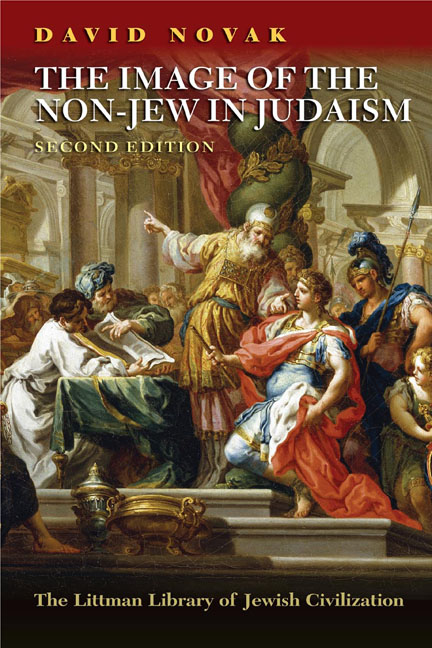Book contents
- Frontmatter
- Dedication
- Preface
- Acknowledgments
- Contents
- Chapter Summaries
- 1 The Origins of the Noahide Laws
- 2 The Law of Adjudication
- 3 The Law of Blasphemy
- 4 The Law of Idolatry
- 5 The Law of Homicide
- 6 The Law of Sexual Relations
- 7 The Law of Robbery
- 8 The Law of the Torn Limb
- 9 Aggadic Speculation
- 10 Maimonides’ Theory of Noahide Law
- 11 Albo's Theory of Noahide Law
- 12 Late Medieval Developments
- 13 Moses Mendelssohn and his School
- 14 Hermann Cohen and the Jewish Neo-Kantians
- 15 Conclusion
- Afterword
- List of Abbreviations
- Notes
- Bibliography
- Index
Preface
- Frontmatter
- Dedication
- Preface
- Acknowledgments
- Contents
- Chapter Summaries
- 1 The Origins of the Noahide Laws
- 2 The Law of Adjudication
- 3 The Law of Blasphemy
- 4 The Law of Idolatry
- 5 The Law of Homicide
- 6 The Law of Sexual Relations
- 7 The Law of Robbery
- 8 The Law of the Torn Limb
- 9 Aggadic Speculation
- 10 Maimonides’ Theory of Noahide Law
- 11 Albo's Theory of Noahide Law
- 12 Late Medieval Developments
- 13 Moses Mendelssohn and his School
- 14 Hermann Cohen and the Jewish Neo-Kantians
- 15 Conclusion
- Afterword
- List of Abbreviations
- Notes
- Bibliography
- Index
Summary
This book is an attempt to understand the role the image of the non-Jew has played in the history of Judaism. The image of the non-Jew is one that has had a profound influence on the way Jews have interacted with actual non- Jews they have encountered at various points in their history. It has also shaped the way they have understood their own identity in determining just what distinguishes them from the non-Jews around them. The image of the non-Jew in Judaism, therefore, should be of interest to those concerned with the history of Judaism itself, as well as those concerned with Jewish–Christian and Jewish–Muslim relations, comparative religion, the development of Jewish law and philosophical deliberation on Judaism.
A study such as this would be likely to have a rather episodic character were it not for a crucial factor. Since rabbinic times the concept of sheva mitzvot bnei Noah—the seven commandments of the sons of Noah—what we call Noahide law, has provided the conceptual framework for just about every serious Jewish treatment of the image of the non-Jew. For this reason a study of the use of this concept in both Jewish law and theology gives historical continuity to a treatment of the image of the non-Jew in Judaism. Furthermore, it enables one to lay the foundation for a systematic philosophical reflection on Judaism because a philosophy of a religion involves at the outset an idea of the human person for whom that religion is to be instructive and normative. A study of the crucial concept of Noahide law, then, enables a philosophy of Judaism to be historically rooted without being only a treatment of things past, that is, a constructive enterprise emerging out of the very object of its interest and understanding.
The most persistent characteristic of this concept throughout its development is that is has a double reference.On the one hand, it refers to that body of law that the rabbis and subsequent Jewish thinkers believed pertained to all humankind, as distinguished from the 613 commandments of the Torah that were and are the obligations of Jews alone. On the other hand, it refers to that body of law to which the Jewish people themselves were considered obligated prior to Sinai.
- Type
- Chapter
- Information
- The Image of the Non-Jew in JudaismThe Idea of Noahide Law, pp. vii - xPublisher: Liverpool University PressPrint publication year: 2011

